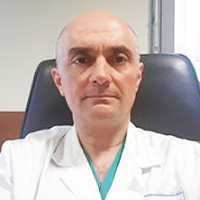Radiological assessment of exposure doses and radon exhalation rates of building materials in Saudi Arabia
Published on: 23rd February, 2018
OCLC Number/Unique Identifier: 7347024500
In the present work, samples of building material are analyzed for their naturally occurring radioisotope activity such as uranium, radium, and radon. The radon emission rates, and the annual effective doses, "AED”, are also investigated. The activity of twenty-four samples, taken from the local markets of Saudi Arabia, was determined using the "Sealed-cup Technique” and Solid State Nuclear Track Detectors, "SSNTD.” The uranium concentration activity of the samples is found to vary from 0.62 to 4.68 ppm with an average of 1.92±0.42 ppm. The radium concentration varies from 0.61 to 4.64 Bq·kg−1, with an average of 1.91±0.42 Bq·kg−1, the radon concentration in the samples varies from 42.29 to 319.97 Bq·m−3 with an average of 131.53±28.94 Bq·m−3. The value of the dissolved radon concentration in the collected samples varies from 12.99 to 98.97 Bq·m−3 with an average of 40.41±8.89 Bq·m−3. The mass exhalation rates are found to vary from 1.54 to 11.65 mBq·kg−1·h−1, with an average of 4.79±1.05 mBq·kg−1·h−1, while the surface inhalation rates vary from 76.97 to 582.35 mBq·m−2·h−1, with an average of 239.38±52.66 mBq·m−2·h−1. The AED due to indoor uses varies from 1.07 to 8.07 mSv·y−1, with an average of 3.32±0.73 mSv·y−1. The AED due to indoor plus outdoor uses varies from 1.47 to 11.10 mSv·y−1, with an average of 4.56±1.0 mSv·y−1. The results of this study show that the values obtained for most samples are within the internationally accepted recommended values. Therefore, these samples can be used as building materials as they do not pose a major risk to humans.
Cystic fibrosis, the key link with airborne alpha emitting nanoparticulates
Published on: 18th June, 2021
OCLC Number/Unique Identifier: 9100376557
Cystic fibrosis is explained in this paper that suggests tackling the disease by elimination of the most significant sources of contamination.




